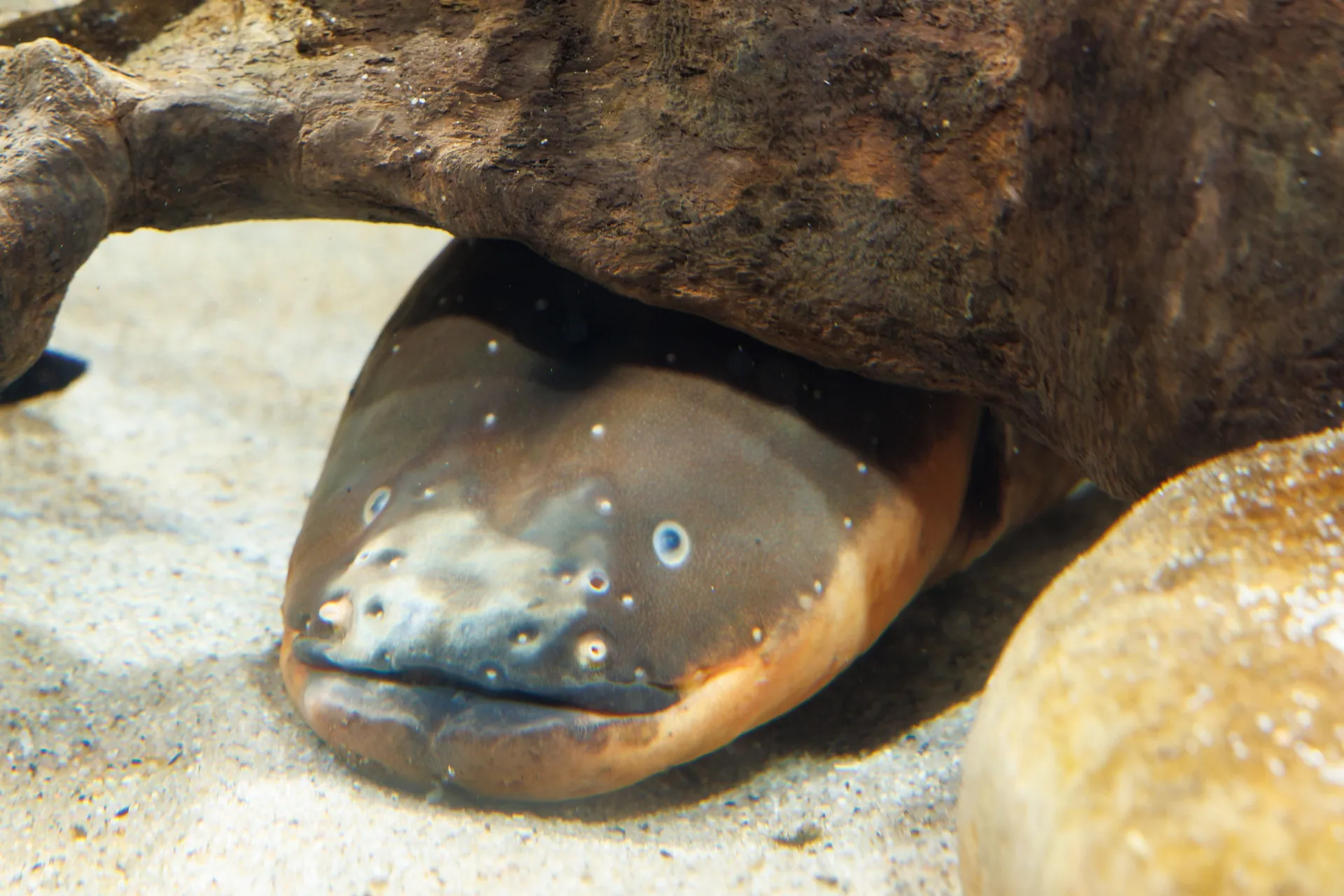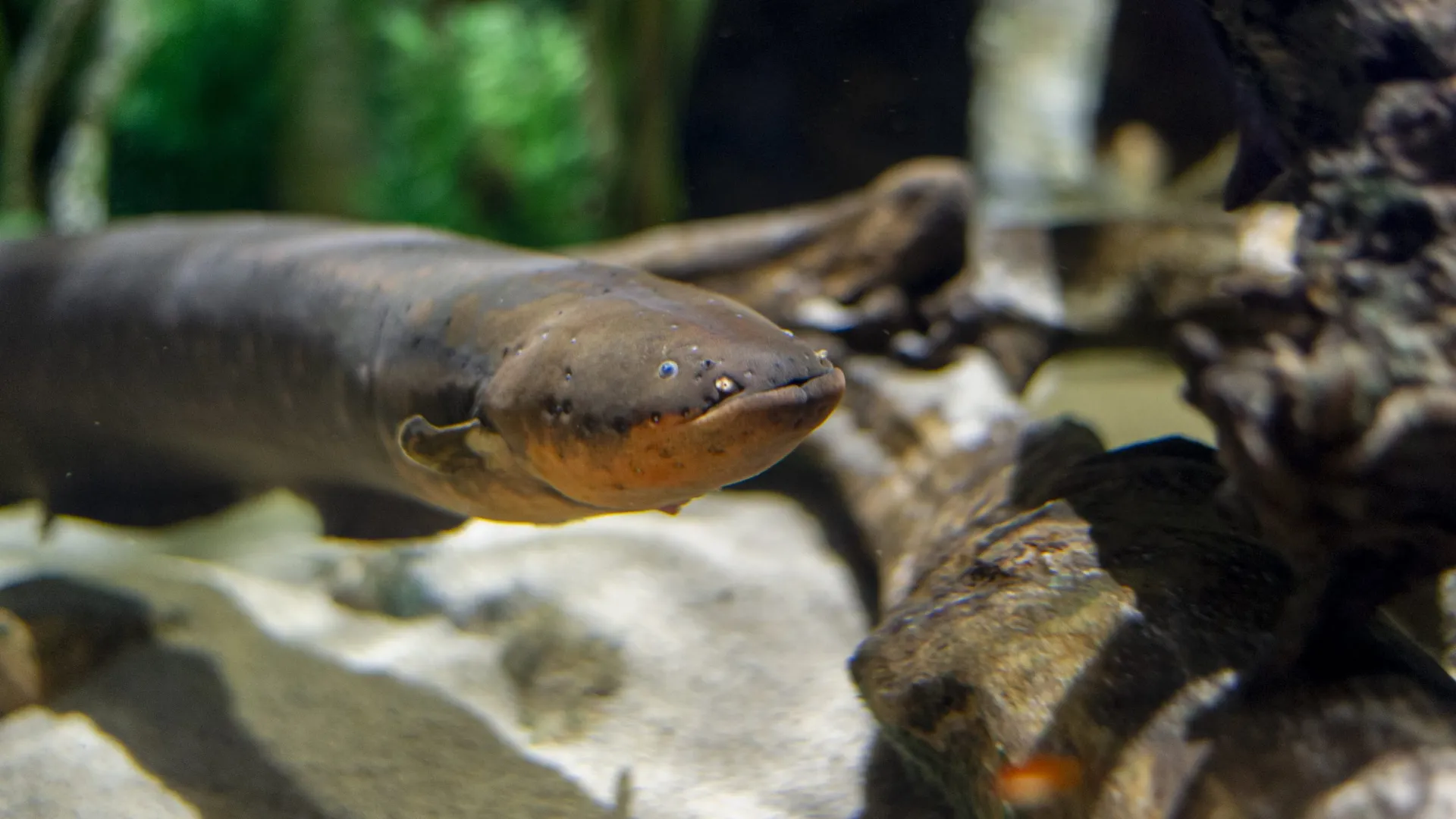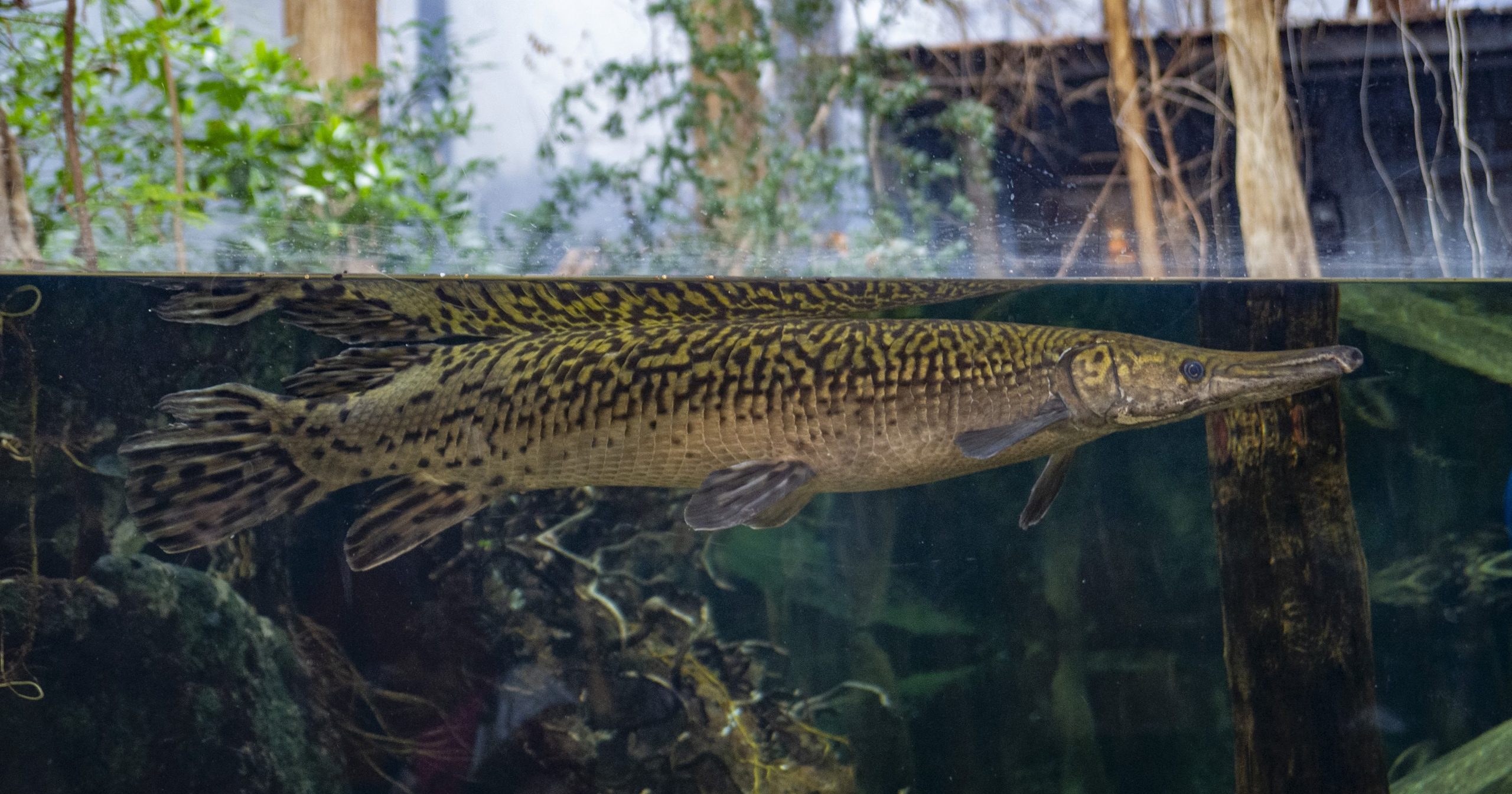On Exhibit
Rivers of the World
The electric eel is capable of generating over 800 volts of electricity. An adult eel of more than four feet in length has even been documented discharging more than 860 volts! Even though that’s a lot of voltage, it’s only delivered at about one amp. That’s still large enough of a shock to easily stun prey or predators. Most of the time they only generate about 10 volts for navigation and to locate prey. To produce their shocks, eels have three different electrical organs that are made up of thousands of electrical generating cells called electrocytes. The eels also have the ability to discharge rapidly – “ZAP! ZAP! ZAP!”.
The water that electric eels often live in can be murky, muddy, and low in oxygen. Because of this, the eels are air breathers and must return to the surface of the water to take a breath at least every ten minutes. And because they often live in murky water, the eels have poor eyesight, and instead rely on their electricity to help them navigate. Additionally, the electric eel is not even an eel at all! They are actually a type of knifefish and are more closely related to carp than to true eels.
Our Electric Eel exhibit features interactive interpretation. Probes in the water detect the electric eel’s discharge. The leads are connected to an amplifier and LED meter to give our guests a better understanding of how the eel varies these bursts of electricity. When at rest, the eel discharges very little electricity. But the electrical activity increase when the eel is moving about the exhibit and when the eel is feeding. The eel doesn’t directly power the speaker or the lights connected to the exhibit, the display instead directly correlates to the electricity discharged by the animal.








